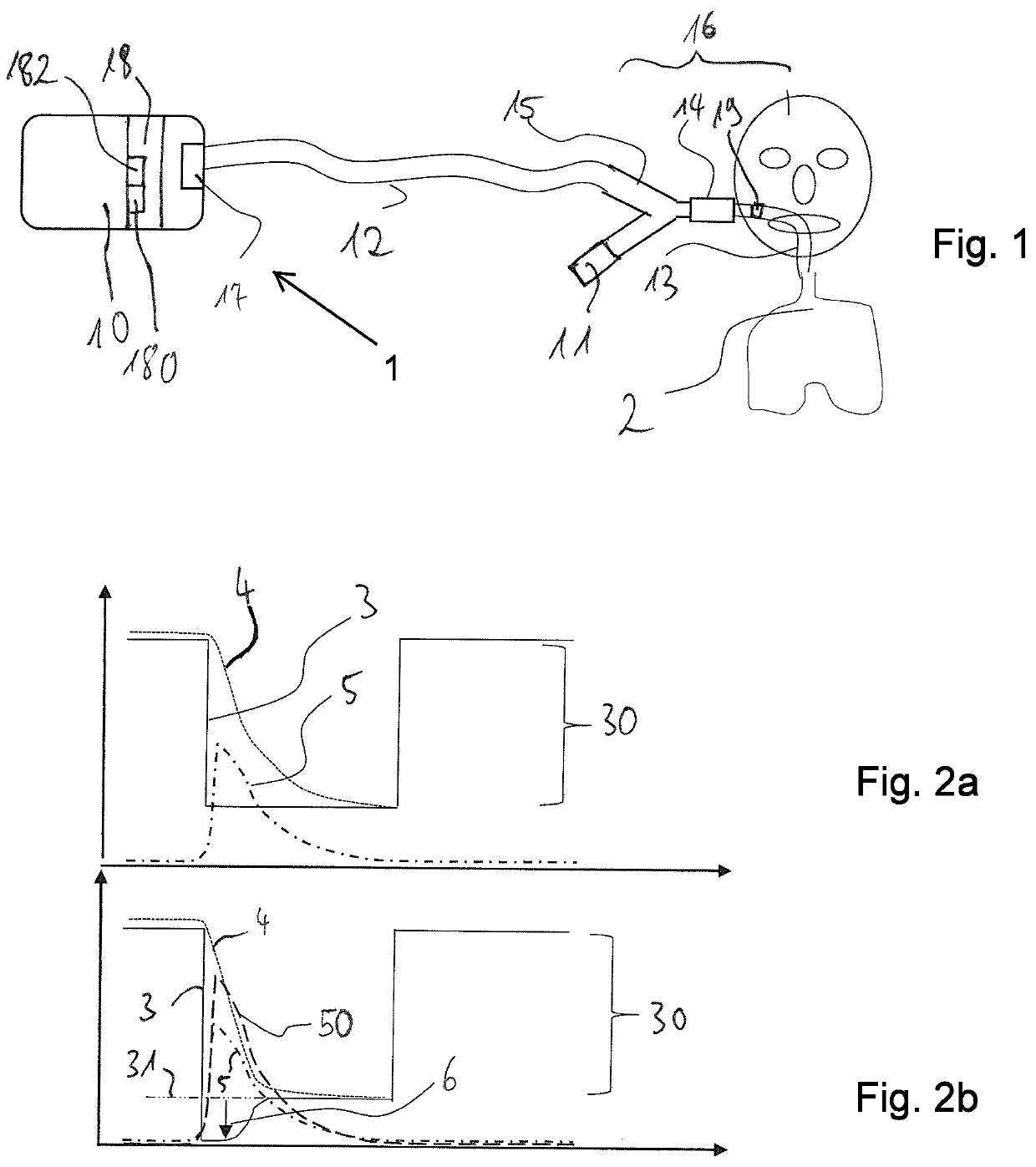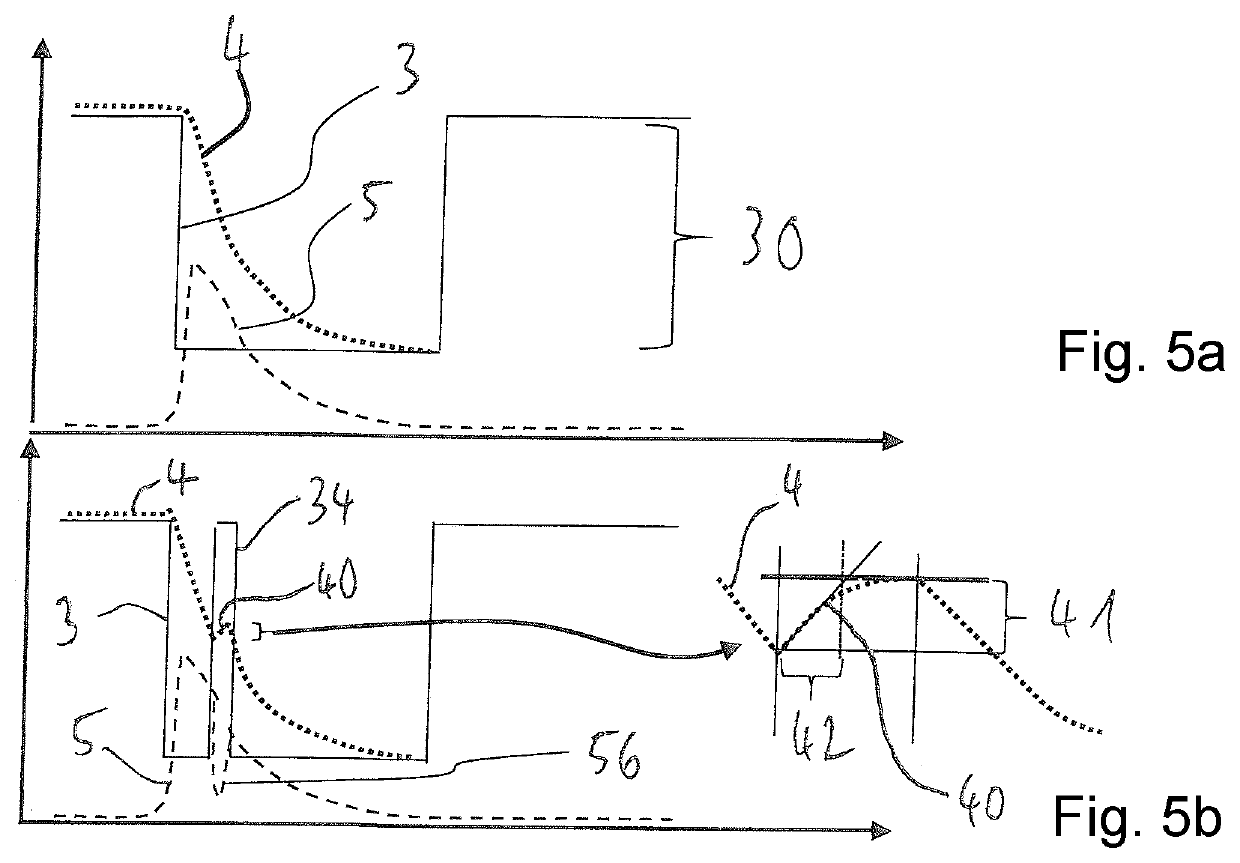Method and device for the adaptive regulation of a positive end-expiratory pressure (PEEP)
a positive end-expiratory pressure and adaptive regulation technology, applied in medical science, diagnostics, other medical devices, etc., can solve the problems of not being able to detect air trapping by ventilators, so-called air trapping, and damage to the respiratory organs of patients
- Summary
- Abstract
- Description
- Claims
- Application Information
AI Technical Summary
Benefits of technology
Problems solved by technology
Method used
Image
Examples
Embodiment Construction
[0033]Referring to the drawings, a ventilator is designated in its entirety by the reference number 1 in FIG. 1. It has a blower unit 10 with a fan 17, which blower unit 10 is connected to a patient 2 via a user interface 16.
[0034]The user interface 16 comprises a tube 13, which is connected to a gas flow-measuring unit 14, a Y-piece 15, which is connected with one end to the gas flow-measuring unit 14, and an exhalation valve 11, which is connected to a second end of the Y-piece 15. The last end of the Y-piece 15 is fluid-communicatingly connected to a fan 17 of the blower unit 10 via a tube 12.
[0035]As an alternative, the user interface 16 may be configured as a mask, as a nasal mask or also in another form, the user interface 16 always comprising an exhalation valve 11.
[0036]The ventilator 1 further comprises a control device 18, which transmits control signals to the exhalation valve 11 and to the fan 17, as well as received measured signals from the gas flow-measuring unit 14. ...
PUM
 Login to View More
Login to View More Abstract
Description
Claims
Application Information
 Login to View More
Login to View More - R&D
- Intellectual Property
- Life Sciences
- Materials
- Tech Scout
- Unparalleled Data Quality
- Higher Quality Content
- 60% Fewer Hallucinations
Browse by: Latest US Patents, China's latest patents, Technical Efficacy Thesaurus, Application Domain, Technology Topic, Popular Technical Reports.
© 2025 PatSnap. All rights reserved.Legal|Privacy policy|Modern Slavery Act Transparency Statement|Sitemap|About US| Contact US: help@patsnap.com



